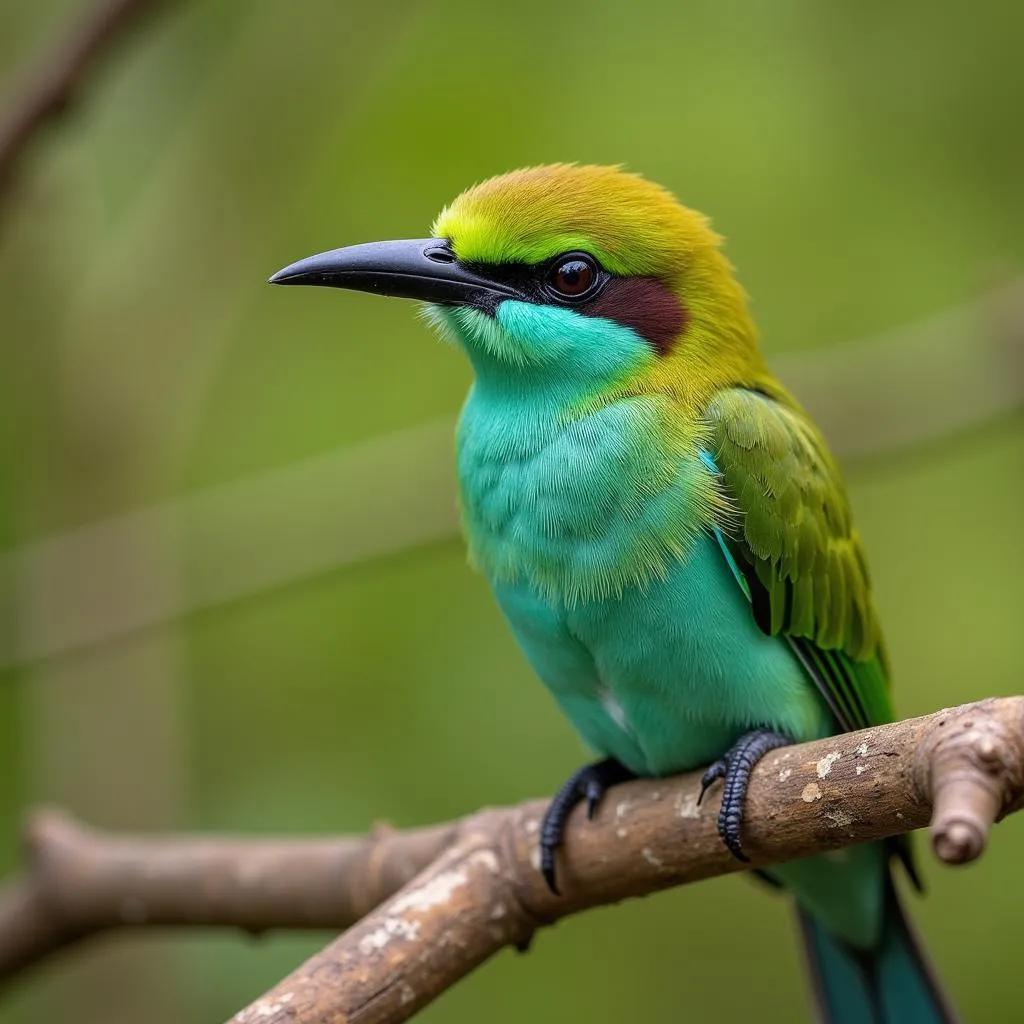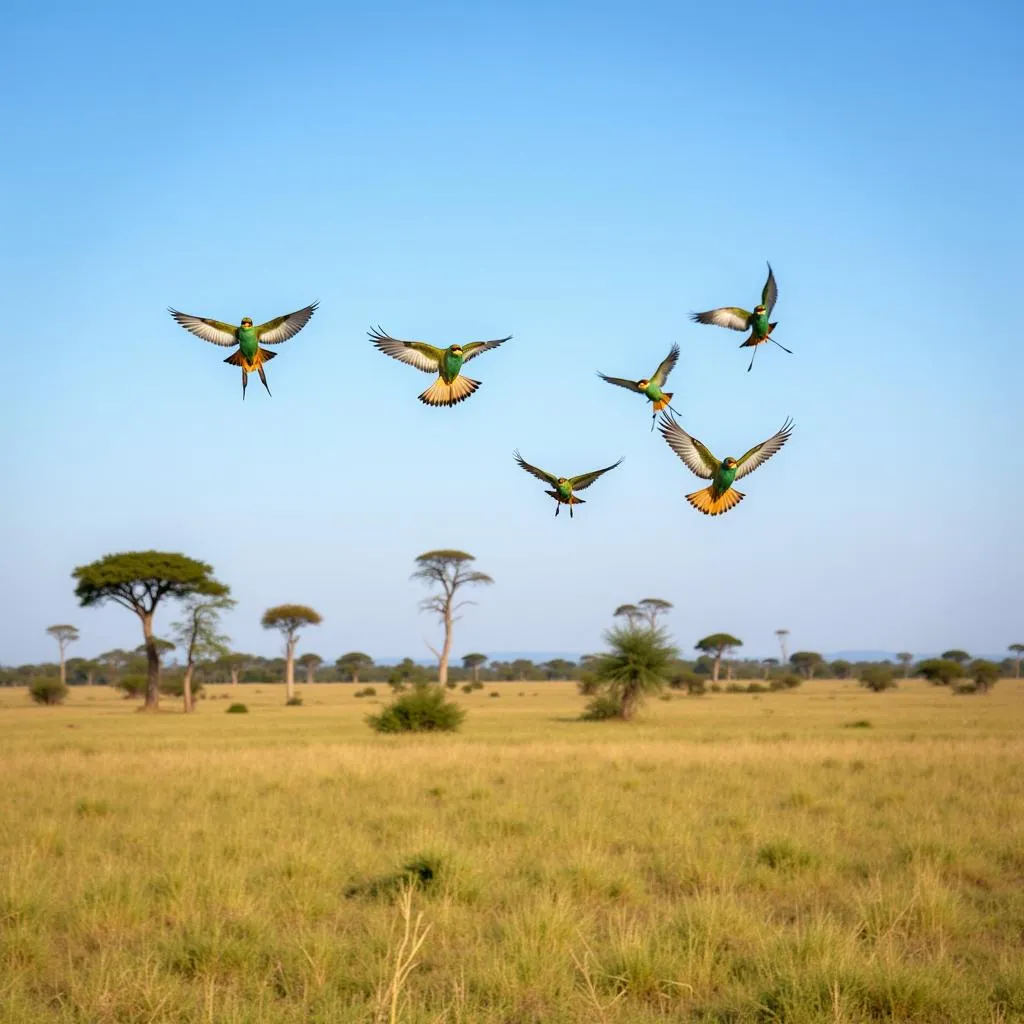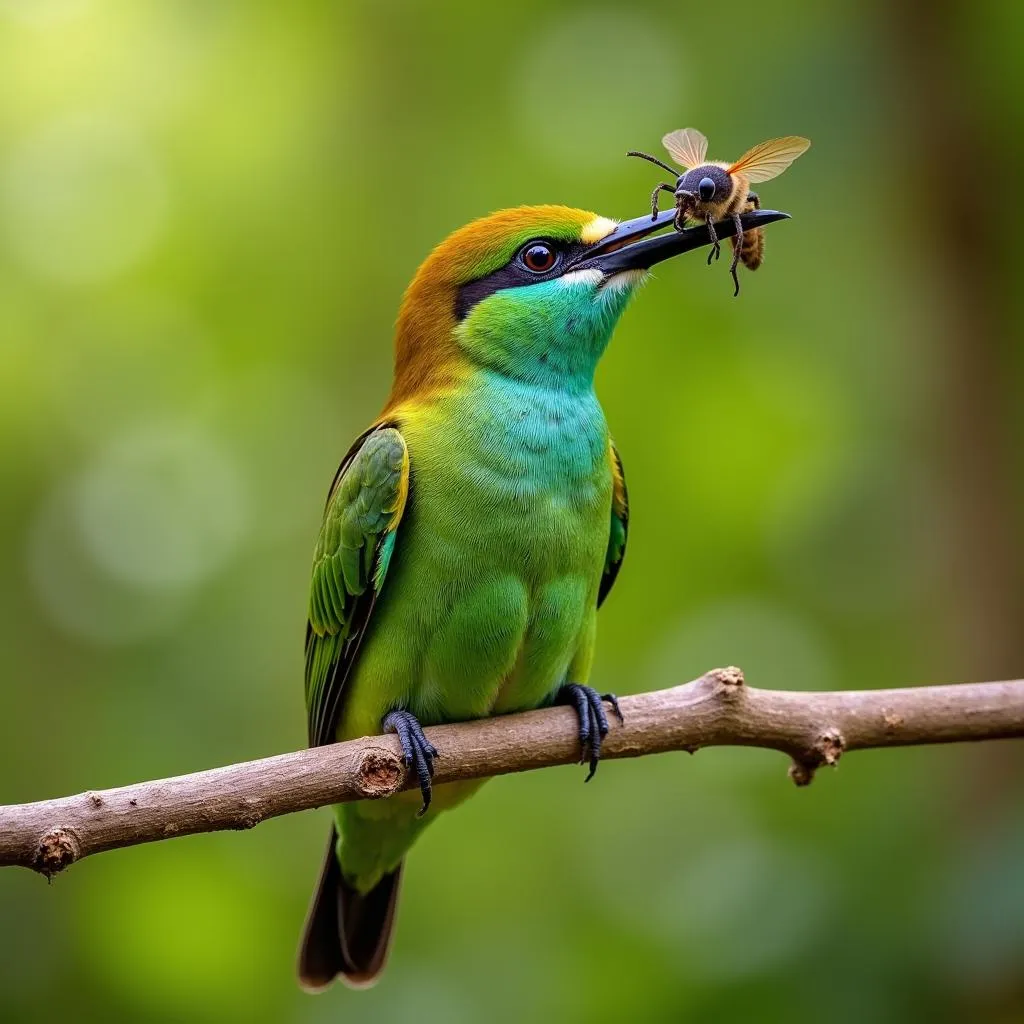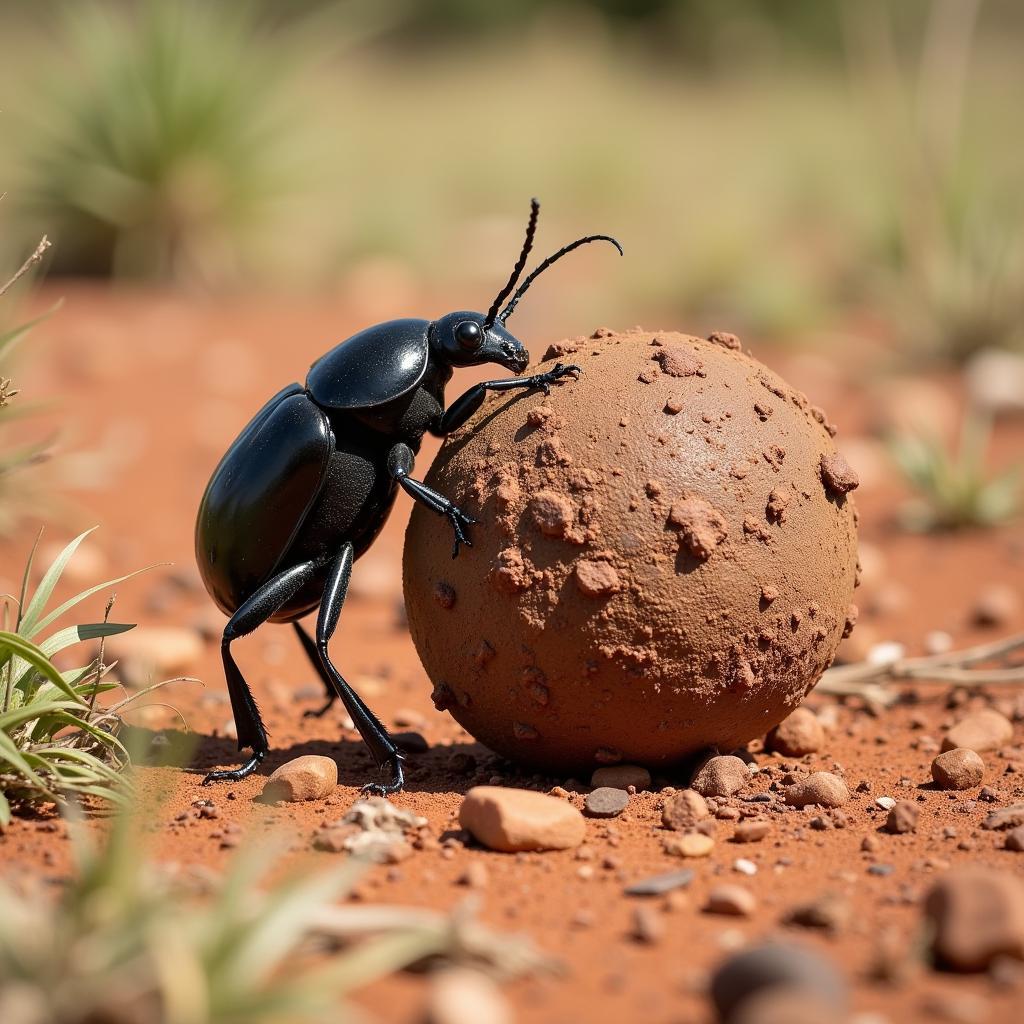A Flash of Green: Discovering the African Green Bee-eater
The African green bee-eater, with its vibrant plumage and acrobatic flight, is a sight to behold. This dazzling bird, scientifically known as Merops persicus, is a common sight across sub-Saharan Africa, bringing a touch of emerald to savannas, woodlands, and even gardens. Far from just a pretty face, the African green bee-eater boasts a fascinating life cycle, unique hunting techniques, and plays a vital role in its ecosystem.
A Rainbow in Flight: Appearance and Characteristics
 African green bee-eater perched on a branch
African green bee-eater perched on a branch
True to its name, the African green bee-eater is predominantly green, with shades ranging from olive to emerald, depending on the light. This camouflage is perfect for blending into the foliage as it waits for unsuspecting prey. Its underparts, however, burst with a contrasting turquoise, making it easily identifiable when in flight. Adding to its striking appearance is a black “bandit mask” that extends from its beak across its eyes, and a long, slender tail often adorned with elegant streamers.
These birds are relatively small, measuring about 9-12 inches in length, with a wingspan of around 16 inches. They are lightweight, weighing only about 20-30 grams, allowing for their agile flight and impressive aerial maneuvers.
More Than a Pretty Bird: Habitat and Distribution
African green bee-eaters are highly adaptable birds, thriving in a variety of habitats across sub-Saharan Africa. They prefer open areas with scattered trees and shrubs, such as savannas, grasslands, and woodlands. However, they are also increasingly found in agricultural areas, gardens, and parks, particularly those near water sources.
 African green bee-eaters in flight over savannah
African green bee-eaters in flight over savannah
Their distribution stretches from Senegal and Gambia in the west to Ethiopia and Somalia in the east, and southwards to South Africa. They are non-migratory birds, but some populations may make local movements in response to food availability or changing weather conditions.
A Feast for the Eyes, A Feast for the Bird: Diet and Hunting Techniques
As their name suggests, African green bee-eaters have a particular fondness for bees. These buzzing insects make up a significant portion of their diet, which also includes wasps, hornets, dragonflies, butterflies, and other flying insects.
Their hunting technique is a sight to behold. They perch on exposed branches, telephone wires, or even termite mounds, patiently scanning the skies for their next meal. Once a target is spotted, they launch into a swift, acrobatic pursuit, snatching their prey mid-air with their long, pointed beaks.
Before swallowing their catch, they cleverly remove the stinger by repeatedly hitting the insect against a hard surface, ensuring a safe and delicious meal.
 African green bee-eater with insect prey
African green bee-eater with insect prey
Nesting Habits and Social Life
African green bee-eaters are highly social birds, often found in flocks that can range in size from a few individuals to hundreds. They are particularly vocal, communicating with each other through a variety of calls, from chirps and whistles to harsh, raspy sounds.
These birds are monogamous and often breed colonially. They excavate their nests in vertical banks, cliffs, or even termite mounds, creating tunnels that can extend up to a meter long. The female typically lays 2-4 eggs, and both parents share the responsibility of incubating the eggs and caring for the chicks.
Conservation Status and Threats
Fortunately, the African green bee-eater is currently classified as a species of Least Concern by the International Union for Conservation of Nature (IUCN). However, they face several threats, including habitat loss due to deforestation and agricultural expansion, as well as pesticide poisoning from the insects they consume.
The African Green Bee-eater: A Jewel of the Skies
The African green bee-eater, with its dazzling beauty, fascinating behavior, and vital role in the ecosystem, is a testament to the wonders of the natural world. By understanding and appreciating these feathered jewels, we can contribute to their conservation and ensure that their vibrant presence continues to grace the African skies for generations to come.

